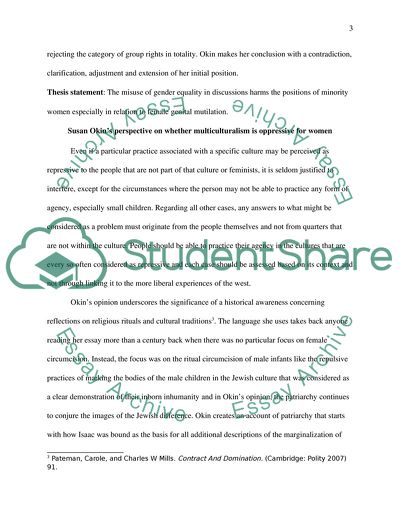Cite this document
(Is Multiculturalism Bad for Women Coursework Example | Topics and Well Written Essays - 2000 words, n.d.)
Is Multiculturalism Bad for Women Coursework Example | Topics and Well Written Essays - 2000 words. https://studentshare.org/anthropology/1852054-is-multiculturalism-bad-for-women-female-genital-mutilation
Is Multiculturalism Bad for Women Coursework Example | Topics and Well Written Essays - 2000 words. https://studentshare.org/anthropology/1852054-is-multiculturalism-bad-for-women-female-genital-mutilation
(Is Multiculturalism Bad for Women Coursework Example | Topics and Well Written Essays - 2000 Words)
Is Multiculturalism Bad for Women Coursework Example | Topics and Well Written Essays - 2000 Words. https://studentshare.org/anthropology/1852054-is-multiculturalism-bad-for-women-female-genital-mutilation.
Is Multiculturalism Bad for Women Coursework Example | Topics and Well Written Essays - 2000 Words. https://studentshare.org/anthropology/1852054-is-multiculturalism-bad-for-women-female-genital-mutilation.
“Is Multiculturalism Bad for Women Coursework Example | Topics and Well Written Essays - 2000 Words”. https://studentshare.org/anthropology/1852054-is-multiculturalism-bad-for-women-female-genital-mutilation.


